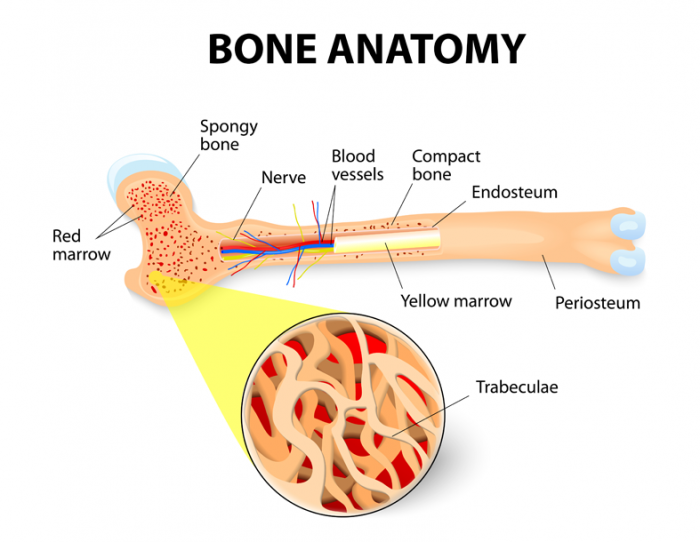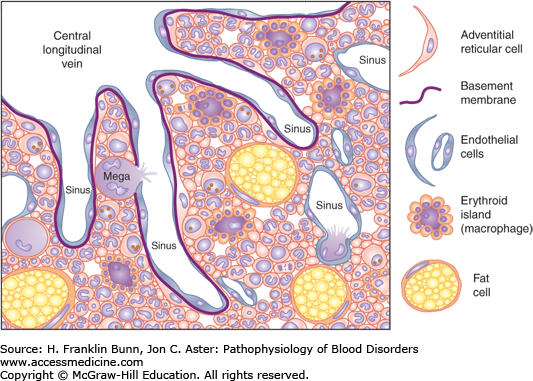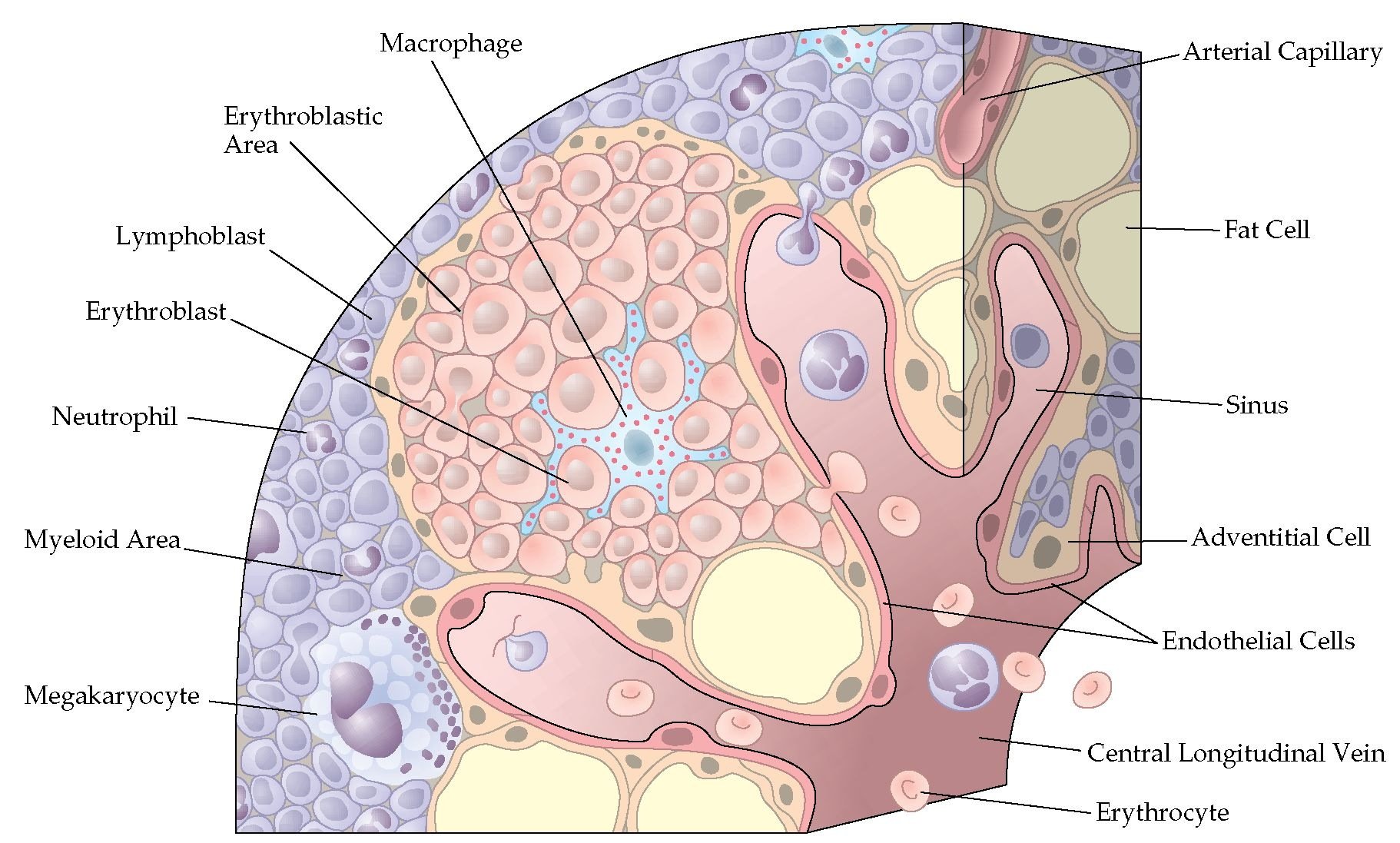- Bone Marrow is the soft, highly vascular and flexible connective tissue within bone cavities which serve as the primary site of new blood cell production or hematopoiesis.
- In adult humans, bone marrow is primarily located in the ribs, vertebrae, sternum, and bones of the pelvis.

- The majority of the cell types involved in the immune system is produced from a common hemopoietic stem cell (HSC).
- HSC are found in the fetal liver, fetal spleen and neonate and adult bone marrow.
- Bone marrow is the primary source of pluripotent stem cells that give rise to all hemopoietic cells (blood cells) including lymphocytes.
- As a part of the lymphatic system, it is the major organ for B cell maturation and gives rise to the precursor cells of the thymic lymphocytes.
- The thymus and the bone marrow are primary lymphoid organs as T and B cells must first undergo maturation in these organs/tissues before migrating to the secondary lymphoid tissues, such as the spleen, lymph nodes and mucosa associated lymphoid tissues (MALT).
- Staring from the last months of fetal development when bone marrow becomes the dominant site of hemopoiesis (blood cell formation), the great majority of cells involved in mammalian immunity are derived from precursors in the bone marrow.
Interesting Science Videos
Types of Bone Marrow
There are two categories of bone marrow tissue: red marrow and yellow marrow. Most of the bone marrow during birth to early adolescence is red marrow while the red marrow is replaced with yellow with age.

In adults, red marrow is confined mostly to skeletal system bones that serve to produce blood cells and help remove old cells from circulation. They contain hematopoietic stem cells that produce two other types of stem cells: myeloid stem cells and lymphoid stem cells. These cells develop into red blood cells, white blood cells, or platelets.
Yellow marrow found in spongy bones and in the shaft of long bones, is non-vascular and consists primarily of fat cells. It is composed of hematopoietic tissue that has become inactive.
Structure of Bone Marrow
The structure of bone marrow constitutes of hematopoietic tissue islands and adipose cells surrounded by vascular sinuses interspersed within a meshwork of trabecular bone.

- The bone marrow is composed of both cellular and non-cellular components and structurally be divided into vascular and non-vascular regions.
- The non-vascular section of bone marrow is composed of hemopoietic cells of various lineages and maturity, packed between fat cells, thin bands of bony tissue (trabeculae), collagen fibers, fibroblasts and dendritic cells. This is where hematopoiesis takes place.
- The vascular section contains blood vessels that supply the bone with nutrients and transport blood stem cells and formed mature blood cells away into circulation.
- Ultrastructural studies show hemopoietic cells cluster around the vascular sinuses where they mature, before they eventually are discharged into the blood.
- Lymphocytes are found surrounding the small radial arteries, whereas most immature myeloid precursors are found deep in the parenchyma.

Functions of Bone Marrow
- The bone marrow gives rise to all of the lymphoid cells that migrate to the thymus and mature into T cells, as well as to the major population of conventional B cells.
- B cells mature in the bone marrow and undergo selection for non-self before making their way to the peripheral lymphoid tissues.
- Since the bone marrow constitutes of the hemopoietic cells derived from multipotential stem cells, they not only give rise to all of the lymphoid cells found in the lymphoid tissue, but also to all of the cells found in the blood.
- Platelets, which are crucial for the blood clotting process, are formed from bone marrow just like other blood cells.
- Yellow marrow is actively involved in lipid storage.
References
- Bailey, Regina. (2017, October 16). Bone Marrow and Blood Cell Development. Retrieved from https://www.thoughtco.com/bone-marrow-anatomy-373236
- Lydyard, P.M., Whelan,A.,& Fanger,M.W. (2005).Immunology (2 ed.).London: BIOS Scientific Publishers.
- Owen, J. A., Punt, J., & Stranford, S. A. (2013). Kuby Immunology (7 ed.). New York: W.H. Freeman and Company.
- Playfair, J., & Chain, B. (2001). Immunology at a Glance. London: Blackwell Publishing.

This article has clear diagrams/pictoral representations which I would like to use for teaching purposes.
Please will you consider sharing with me?
Many thanks & kind regards
Rita Govender
Sure, you can share the diagrams.